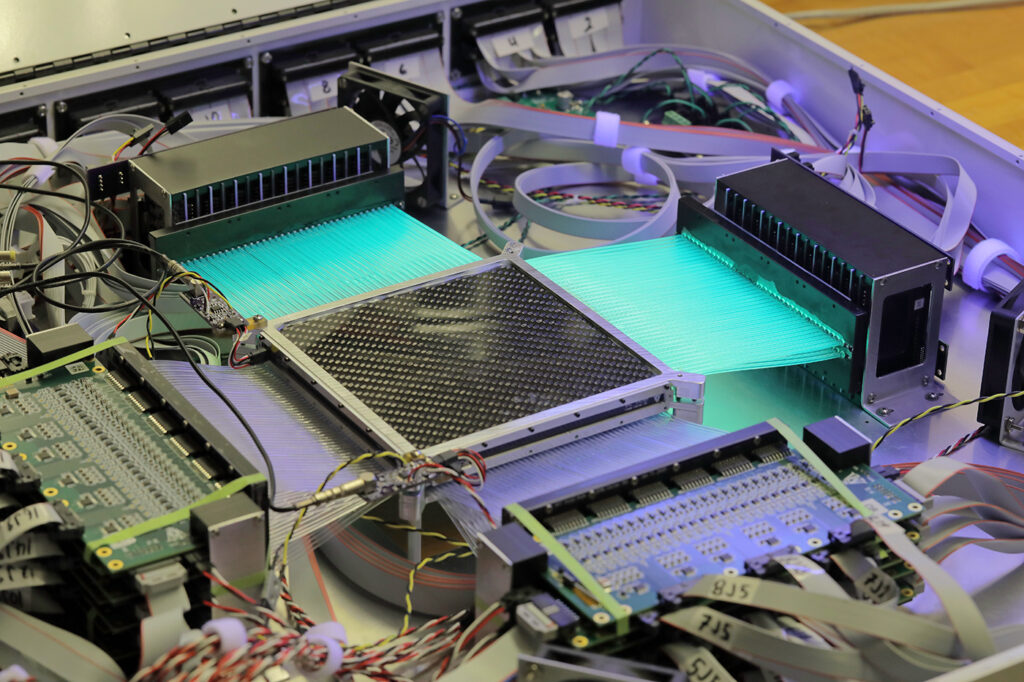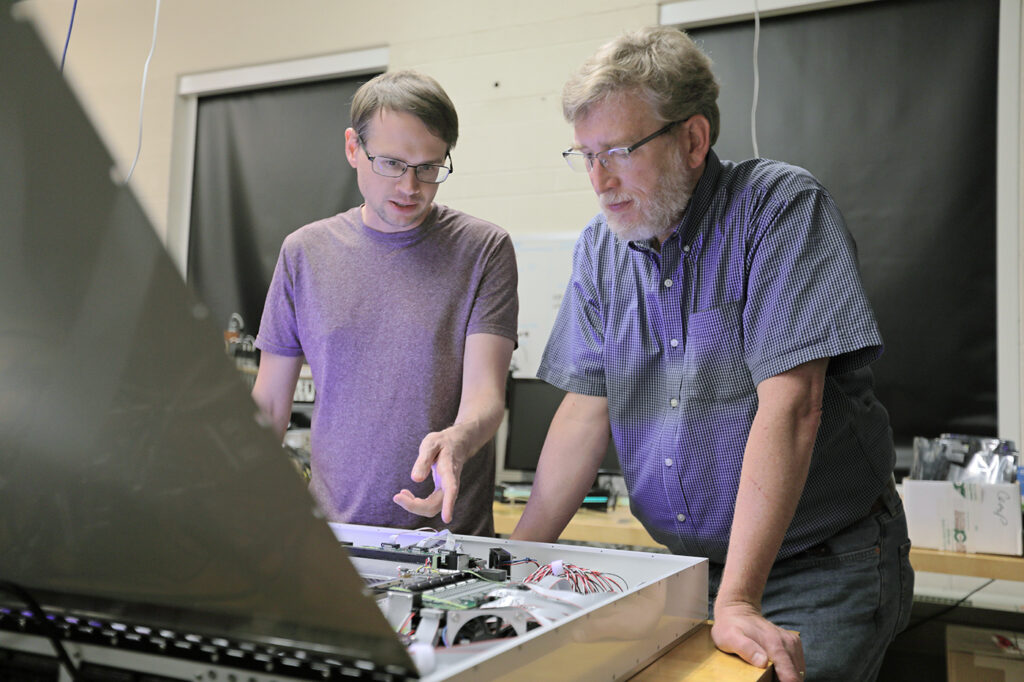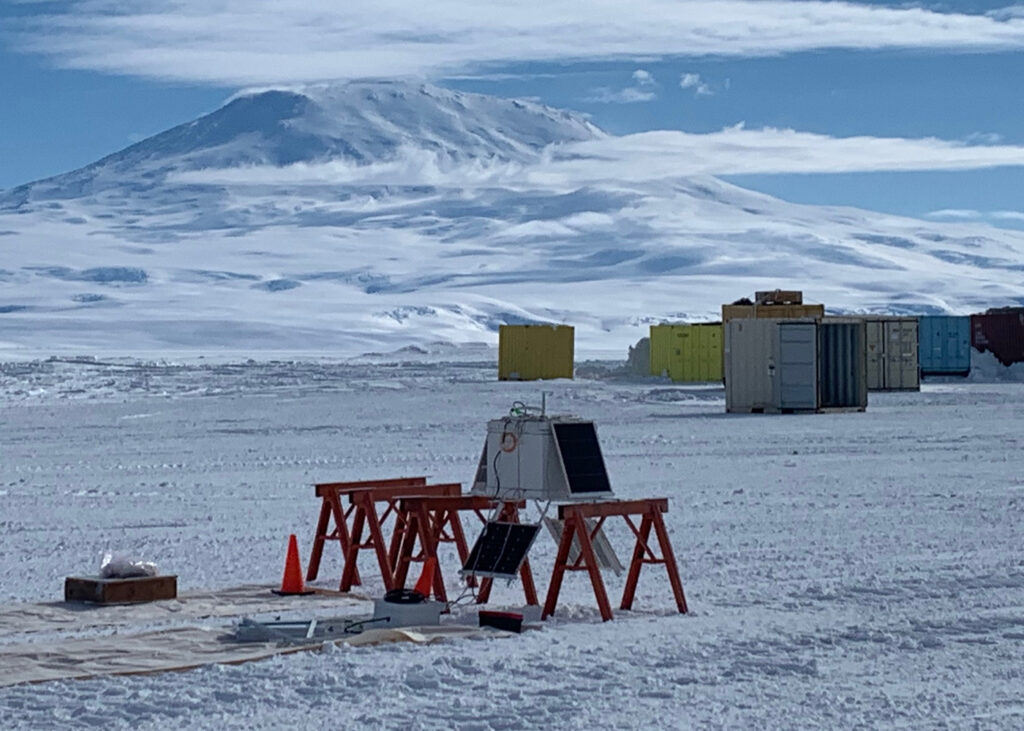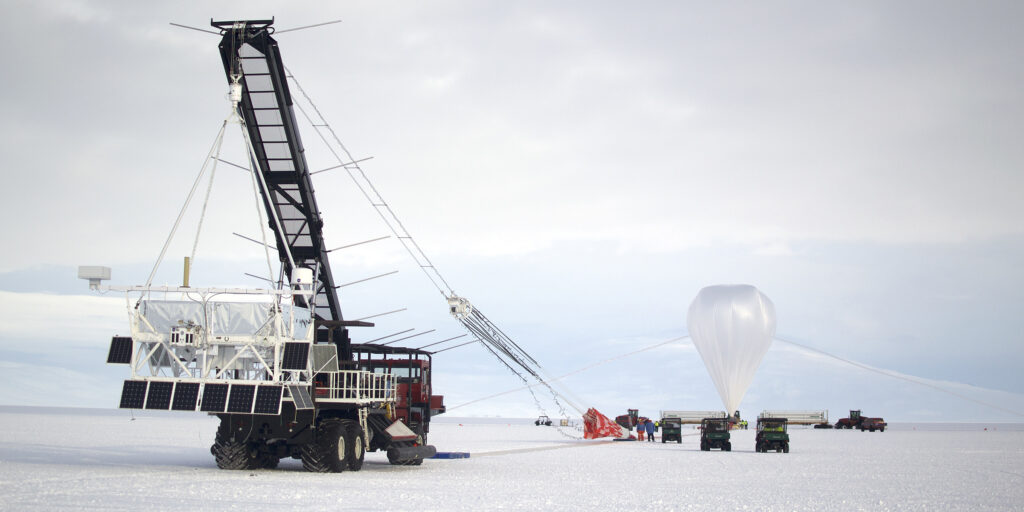James H. Buckley, professor of physics in Arts & Sciences at Washington University in St. Louis, received a $4.9 million award from NASA to build a demonstration version of a large satellite experiment for gamma-ray astronomy research.
Washington University leads the entire effort to develop the instrument, which is planned to launch on a scientific balloon from Antarctica in 2024.

The instrument is called ADAPT, for Antarctic Demonstrator for the Advanced Particle-astrophysics Telescope. It incorporates all of the critical components of an instrument - the APT (Advanced Particle-astrophysics Telescope) - that Buckley has been working on for more than 10 years. Success with this suborbital mission will hopefully lead to an opportunity to build the APT for a larger space mission. Combined with other detectors, like the LIGO gravitational wave observatory, APT would form a key component for multi-messenger astronomy.
"APT was conceived to address two big questions: determining the nature of dark matter and understanding the physics of neutron-star mergers and their role in the origin of the heavy elements," Buckley said. "To achieve these goals, we must improve gamma-ray sensitivity from the MeV to GeV energies by at least an order of magnitude compared to existing experiments, but without a corresponding increase in mission cost.
"This is only possible with a new technical approach utilizing scintillating fibers and a novel design for an imaging calorimeter," he added. "Our design will allow us to simultaneously detect low-energy events by Compton reconstruction and higher-energy events by tracking the electron-positron pair produced by particle interactions."
Buckley is the principal investigator for the new project. Brian Rauch, research assistant professor of physics in Arts & Sciences, and Roger Chamberlain and Jeremy Buhler, both professors of computer science and engineering at the McKelvey School of Engineering, are co-investigators. Richard Bose, senior research engineer in physics in Arts & Sciences, will serve as engineer and project manager.

Brad Jolliff, the Scott Rudolph Professor of Earth and Planetary Sciences in Arts & Sciences and director of the McDonnell Center for the Space Sciences, said: "This award and other recent funding for the XL-Calibur and Taurus instruments place Washington University in a leading role in suborbital astrophysics missions nationally and worldwide. This is an example of great payoff stemming in part from seed funding from the McDonnell Center. For us, research and development such as this, which may ultimately result in a leadership role for Washington University in a major space mission, is a priority."
Other collaborating institutions in the U.S. include the Goddard Space Flight Center, Louisiana State University, University of Minnesota, University of Hawaii and the Naval Research Lab. The Erlangen Center for Astroparticle Physics in Germany is a collaborating institution, and other individual collaborators hail from the INFN in Bari and Pisa, Italy.
The new award follows Buckley's successful prior technology development effort for a smaller version of their gamma ray explorer, also funded by NASA's Astrophysics Research and Analysis program.

Under the previous program, Buckley and his team built detectors for their device and then tested them using a heavy ion beam at the Large Hadron Collider at CERN, the European particle physics laboratory. The scientists then traveled to Antarctica to fly the device alongside Washington University's SuperTIGER instrument on a scientific balloon that launched in December 2019.
"We are now in year three of that grant, getting an instrument ready for testing on the accelerator beam-line at Fermilab and elsewhere," Buckley said. "So this new grant is a second, funded grant - this time, for a full Antarctic balloon experiment - that is part of a research program aimed, ultimately, at developing the case for the APT space mission."

Buckley advocated for this mission in a white paper submitted to the Decadal Survey on Astronomy and Astrophysics 2020. He was previously a co-investigator on the VERITAS and CTA projects, both gamma-ray observatories.
The current ADAPT project will serve as a full test of all of the APT detector systems. APT will make use of scintillating fibers read out by silicon photomultipliers and a distributed imaging CsI calorimeter to provide more than an order of magnitude larger effective area and twice the field of view of existing telescopes.
The ADAPT flight will measure transient gamma-ray events, with results including prompt, degree-scale localization for gamma-ray bursts and polarization constraints for bright bursts. The instrument will also make cosmic-ray measurements
"The possibility of detecting, localizing and constraining polarization of a 'short' gamma-ray burst, presumably merging neutron stars, is the most exciting prospect," Buckley said.
"Ultimately this is part of a long-term program to build a major new space mission aimed at addressing really big questions like the nature of dark matter and the origin of the chemical elements," he said. "It will also help improve our understanding of some of the most energetic and violent processes in the universe - from exploding stars to outflows from supermassive black holes."







